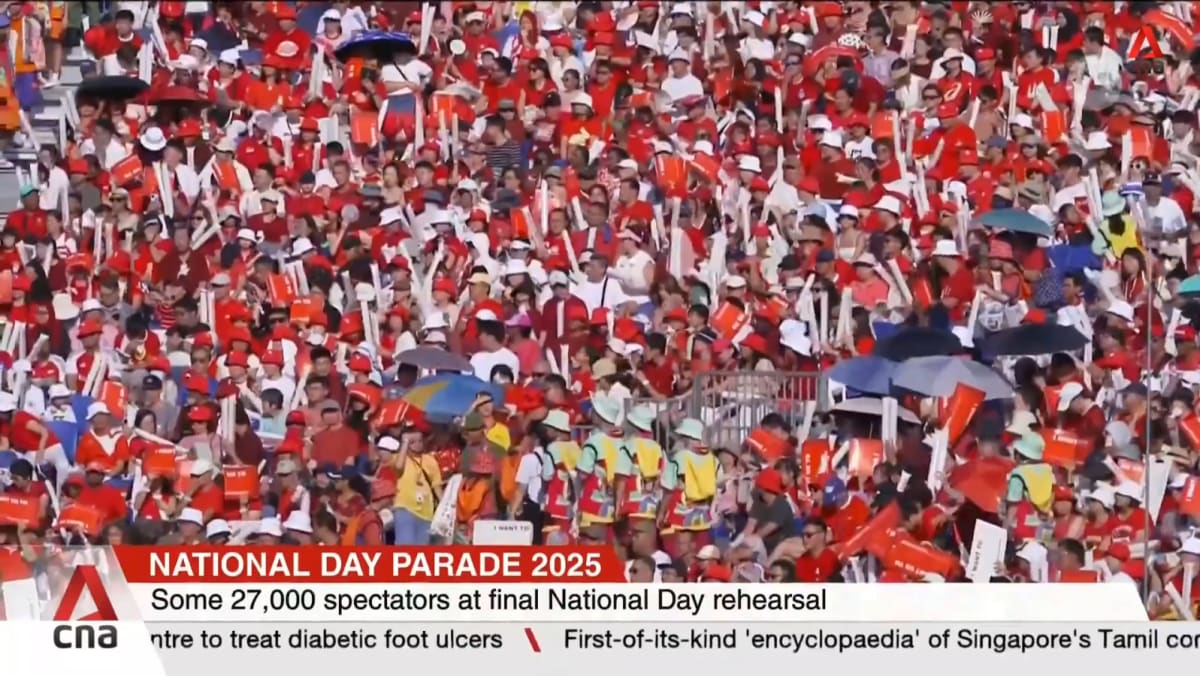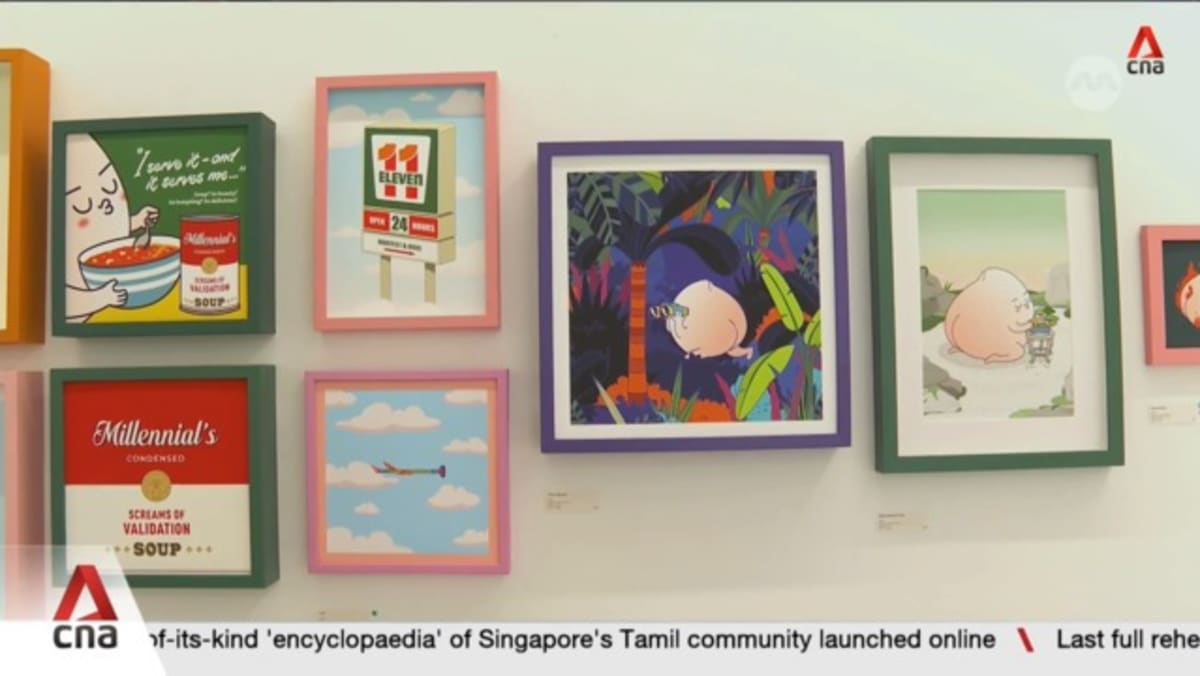Singapore has marked off its 14th General Election, and it has been eventful to say the least. We recap the process by looking at some key statistics and what they mean.
Published May 4, 2025
The votes have been counted. The Returning Officer has declared the results. Cue celebratory flag waves and cheers for the elected candidates – mostly in the whites of the People’s Action Party (PAP) – while those who didn’t do as well at the ballot boxes thanked their supporters and reflected on what could have been.
As the dust settles on Singapore’s 14th General Election since its independence, there’s much to remember for it.
In particular was the strong mandate given to Prime Minister Lawrence Wong to lead the country for the next five years, despite a seemingly stronger slate of opposition candidates fielded.
Beyond the sound and fury of the campaign trail, CNA takes a look at the data to highlight key milestones and insights to better make sense of the 2025 General Election.
PAP’s (unexpected?) strong showing
Some had expected PAP to stumble at this General Election, given that it’s led by party chief Lawrence Wong for the first time.
It also had to negotiate the stepping down of several senior Cabinet ministers, including Deputy Prime Minister Heng Swee Keat and Senior Minister Teo Chee Hean, while bedding in 32 new faces in this year’s contest.
The last-minute switch-up on Nomination Day for where Deputy Prime Minister Gan Kim Yong and Manpower Minister Tan See Leng were fielded also gave the opposition, in particular the Workers’ Party, fodder to paint the PAP in bad light.
“Abandonment” was, in fact, a term bandied about during the hustings.
Yet, the end results showed PAP’s political calculations paid off.
DPM Gan’s Punggol GRC team staved off the WP slate comprising newcomers with star power – including Harpreet Singh and Alexis Dang – to register 55.17 per cent of all valid votes in the constituency.
Similarly, Dr Tan’s Chua Chu Kang GRC team claimed 63.59 per cent of the votes against an experienced Progress Singapore Party grouping featuring its second vice-chairperson A’bas Kasmani.
The two wins reflect the overall national sentiment, as PAP improved on its vote share of 61.23 per cent in 2020 to reach 65.57 per cent this time round.
It also collected 37,279 more votes than its previous outing.
But a total of 92.47 per cent of the more than 2.6 million registered electors voted in this General Election – a new low – perhaps affected by the fact polling day was scheduled during the Labour Day long weekend.
The previous record was 93.18 per cent in GE2011.
Looking ahead
With PAP’s strong showing, eyes will be on what its slate of new faces would bring to parliament.
Cassandra Lee
33 years old

People’s Action Party

Lee Hsien Loong
73 years old

People’s Action Party
Some have expressed their desire to be the voice of the younger generation, including the youngest MP-elect of this election Cassandra Lee.
The new face represents West Coast-Jurong West GRC, and is said to have started volunteering in Yuhua 16 years ago.
She is currently a lawyer specialising in technology, artificial intelligence and cybersecurity at management consultancy EY.
On the other end of the experience spectrum, Senior Minister Lee Hsien Loong will embark on his 10th term as MP after being re-elected in Ang Mo Kio GRC. He is both the oldest MP-elect at 73, as well as the one who has served the most terms.
His team comfortably won the three-way fight with the People’s Power Party and Singapore United Party, clinching 78.95 per cent of the vote in the process.
His experience and state craft will prove crucial as PM Wong steers Singapore through the challenging geopolitical and economic landscape today.
Opposition’s not-so-stellar showing
Conversely, this election proved that while certain opposition parties appear to attract high-calibre candidates, the field is markedly uneven.
This, in turn, could have contributed to several lop-sided results on Polling Night.
WP, for one, continues to forge its identity as the viable alternative voice in parliament. It held on to its 10 seats, comprising Aljunied and Sengkang GRCs and Hougang SMC.
There was, in fact, stronger showings this time round by Hougang incumbent Dennis Tan and the largely unchanged slate in Sengkang.
These results were tempered by a slight dip in results for the Aljunied GRC team. Helmed again by chief Pritam Singh, the quintet garnered 59.68 per cent, or 78,847, of votes – lower than the 59.95 per cent, or 85,815, votes in 2020.
While WP flew its flag high, other parties could not claim to have done the same.
Progress Singapore Party (PSP), for one, described its results as “very shocking” having lost in all the constituencies it contested.
Even its A-team, featuring founder Dr Tan Cheng Bock and secretary-general Leong Mun Wai, floundered in West Coast-Jurong West GRC. It pulled in 39.99 per cent of votes, down from the 48.3 per cent it got in 2020, albeit with a change in electoral boundaries.
This also means it will not be in parliament for the next five years, losing the two Non-constituency Member of Parliament (NCMP) seats to WP.
Speaking of NCMP seats, Singapore Democratic Party chief Chee Soon Juan narrowly missed out on making his long-desired parliament bow by less than one percentage point.
His close-run contest with PAP’s Poh Li San, which saw him garner 46.81 per cent of votes, was not enough to be one of the top two losers. He was beaten out at the death by WP’s Tampines GRC team, which had 47.37 per cent of votes.
Painful losses
Dr Chee wasn’t the only one feeling the pinch this election.
Four parties face the ignominy of losing their election deposits after failing to get at least 12.5 per cent of votes in the wards they contested.
In fact, the National Solidarity Party’s (NSP) two teams contesting in Sembawang and Tampines GRCs garnered 2.32 per cent and 0.18 per cent, respectively.
Meanwhile, the People’s Alliance for Reform’s (PAR) two candidates who ran in Potong Pasir and Radin Mas SMCs also failed to get above the 10-per-cent mark.
Memorable debuts
Any look back of this year’s General Election would have to include a notable mention of the two independent candidates who ran commendable campaigns.
Darryl Lo, who went up against PAP incumbent Melvin Yong and PAR’s Kumar Appavoo in Radin Mas SMC, managed to collect 23.47 per cent of all the votes cast, putting him in second place.
Over at Mounbatten, Jeremy Tan did even better. He got 36.16 per cent of votes against a fellow political newcomer in PAP’s Gho Sze Kee.
As he said in his rally speech, he hoped to set a high bar for future independent candidates to aspire to.
Many would consider it mission accomplished.
Visit our microsite for our full coverage of GE2025.














